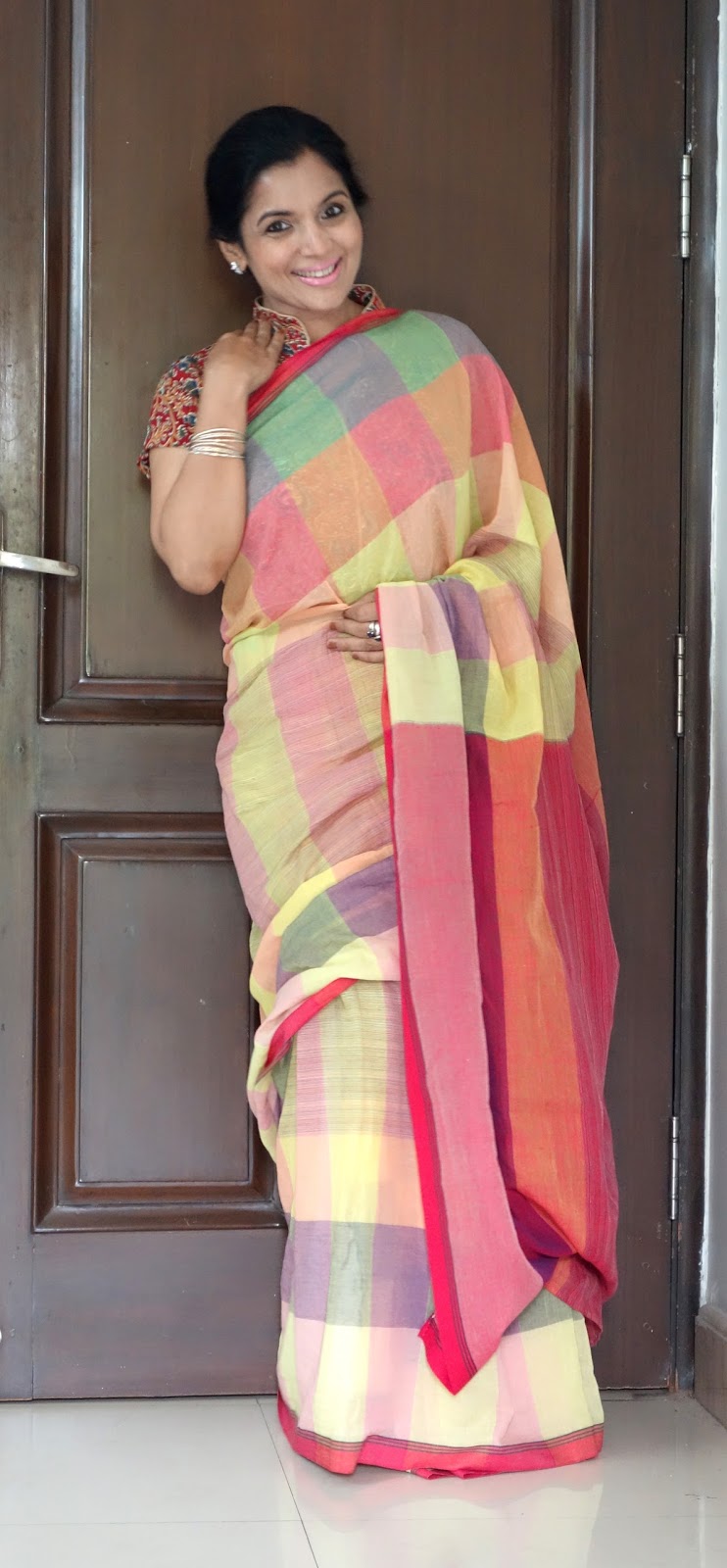Gamcha has been an essential part of the handloom industry in India. Years have passed since the existence of this traditional cotton cloth has prevailed with India’s population. Gamcha is crafted with handmade Bengali cotton and most commonly found with check or stripes pattern. This collection aims to flaunt an aura of grace and elegance.
Flaunting the summer shades of icecream yellow, strawberry pink and pistachio green, this check gamcha saree is crafted with handmade Bengali cotton. The red border detailing gives it an edgy yet contemporary look.
Flaunting the summer shades of icecream yellow, strawberry pink and pistachio green, this check gamcha saree is crafted with handmade Bengali cotton. The red border detailing gives it an edgy yet contemporary look.
Gamcha is a simple, mostly soft piece of cotton fabric, size of a towel, with multiple usage. From bathing towel to a bandanna protecting you from the sun. Gamucha is produced as a primary handloom product by traditional weavers. The handloom towel, or the gamcha as it is known in the heartland, is fast making its presence felt on the fashion scene.
I have paired my gamcha saree with kalamkari blouse. Both the fabrics are super soft, airy, lightweight and easy to drape. It is no designer saree and has no brand or label screaming from the top. In fact, it might not score very high on fashion meter of divas who revel in off shoulder gowns and skimpy dresses. But who cares? The discerning ones will be able to see its innate beauty. It is proudly Indian handloom. It is so comfortable that I can practically sleep and run in it. Crush it, crumple it, sweat in it- It is the most forgiving saree. It will just mould around you and make you look good. It will not demand much in terms of care from you. I promise you, you will hear yourself talking to your Gamcha saree, thanking her and telling her how cool she is. It will spoil you and pamper you so much that you might not feel like wearing any other saree. Just enjoy your Gamcha saree.
Oh and do not miss my gajra (fresh mogra/jasmine flowers in the hair).





















































































